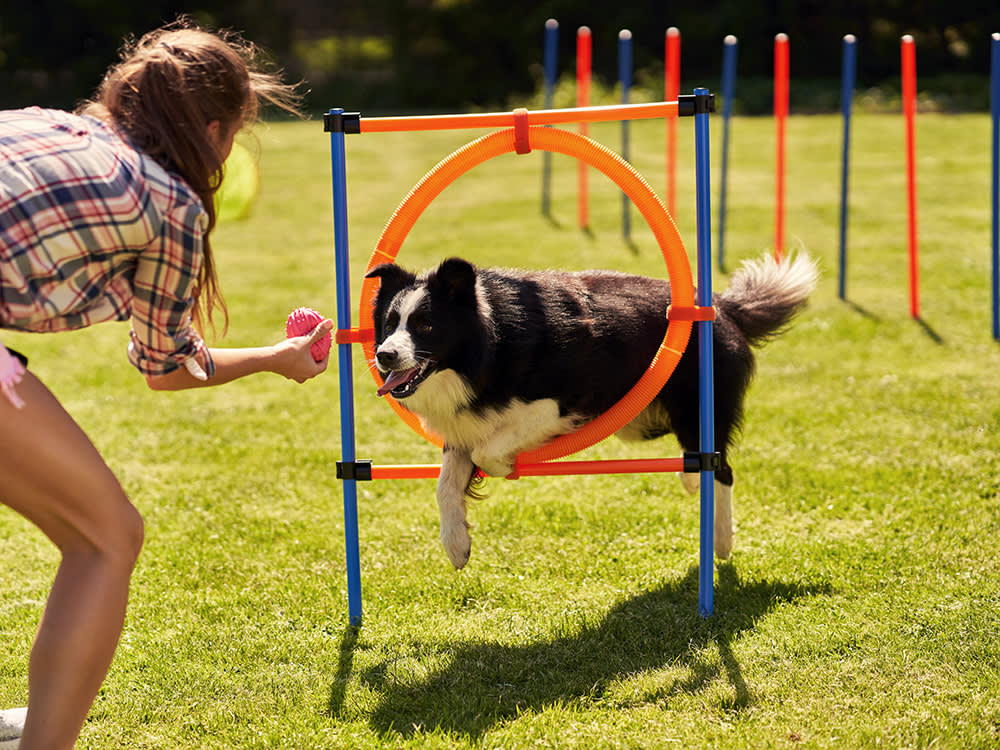Important Tips for Effective Dog Training: A Guide for Animal Owners
Reliable pet dog training is a multifaceted procedure that calls for a critical method tailored to both the family pet's character and the owner's objectives. Comprehending how to browse these barriers can dramatically improve the training experience, ultimately changing the relationship between proprietor and pet dog.
Understanding Canine Behavior
Recognizing dog habits is essential for effective training and cultivating a harmonious connection between pooches and their proprietors. dog training. Dogs interact largely via body language, vocalizations, and actions, making it essential for proprietors to interpret these signals precisely.

Socializing plays a significant duty in pet actions; direct exposure to various settings, individuals, and other animals can substantially influence a pet's personality. Moreover, aspects such as type features and specific personality must direct training methods, as some breeds may have specific behavior qualities that require customized approaches. By understanding these aspects, proprietors can create a supportive setting that motivates positive behavior, bring about successful training outcomes and a much deeper bond with their animals.
Establishing Consistent Commands
Reliable interaction with your pet starts with establishing consistent commands. This fundamental aspect of training is essential for fostering understanding in between you and your pet dog. Uniformity in the commands you use ensures that your pet dog can dependably associate specific words or phrases with the desired actions.
When choosing commands, choose clear, distinctive words that are very easy to set apart and say from each other. Avoid utilizing similar-sounding commands that might puzzle your dog. As an example, making use of "sit" and "remain" is appropriate, however "sit" and "struck" could result in misunderstandings.
Additionally, preserve the very same tone and quantity for each command. Pets are sensitive to vocal cues, so varying your tone can develop confusion.
It is just as important to ensure that all relative are on the exact same page regarding the commands used. A united front in command usage will stop blended signals and reinforce the discovering process.
Positive Reinforcement Techniques
The power of positive reinforcement in pet dog training hinges on its ability to motivate preferred habits via rewards and appreciation. This method is grounded in the concept that actions followed by beneficial outcomes are a lot more likely to be duplicated. By including positive support into your training program, you can efficiently shape your pet dog's habits in a constructive manner.
To execute positive support, it's important to recognize what encourages your pet dog, whether it be treats, toys, or spoken praise. When your dog performs a preferred action, such as remaining on command, right away award them with a treat or love. This organization between the command and the favorable end result reinforces their understanding.
It's critical to timing the rewards correctly; delivering the reinforcement within seconds of the wanted behavior aids your canine make the connection (dog training). Furthermore, consistency is key-- make sure that all family participants make use of the very same commands and reward systems to avoid confusion

Gradually, you can lower the frequency of treats as your pet dog discovers the habits, transitioning to praise or recurring benefits. This method not only fosters a solid bond in between you and your dog but additionally promotes a favorable knowing environment, making educating a delightful experience for both.
Socialization and Communication
Regularly revealing your pet dog to a variety of settings, individuals, and various other pets is vital for their social advancement. Socialization should start early, preferably during the critical window of 3 to 14 weeks, when pups are most receptive to new experiences. Older pets can likewise benefit from ongoing socialization initiatives.
Introduce your canine to various settings, such as parks, pet-friendly stores, and metropolitan areas. This direct exposure aids them adapt to different stimulations, decreasing anxiety and worry actions. Urge favorable interactions with various other dogs and individuals, making sure that these encounters are regulated and risk-free to cultivate self-confidence.
Make use of structured playdates with courteous canines, as this can improve your pet dog's social skills and instruct them appropriate behavior. Obedience courses and training sessions additionally give outstanding possibilities for socializing, enabling your dog to communicate with others in a monitored atmosphere.
Monitor your pet dog's body language during interactions, as this will certainly help you determine their comfort level. Slowly click this raise direct exposure to more challenging circumstances while ensuring that each experience is positive. A well-socialized pet dog is more most likely to display balanced actions, making them a pleasure to have in any type of setup.
Attending To Typical Training Difficulties
Every pet owner will certainly come across training difficulties at some factor, regardless of their pet dog's age or socialization degree. Identifying common problems such as stubbornness, diversions, and fearfulness can help in creating effective techniques for improvement.

Disturbances throughout training sessions can thwart emphasis. To combat this, begin training in a peaceful setting with very YOURURL.com little stimuli. Progressively present interruptions as the canine becomes more competent in commands. Short, regular training sessions are additionally reliable in maintaining attention.
Terror can hinder a dog's discovering process. Gradual desensitization to the source of anxiety, combined with positive support, can help reduce anxiousness. Patience is essential; never ever require a dog right into a situation that creates distress, as this might aggravate the concern.
Inevitably, understanding and attending to these common difficulties with a structured approach will cultivate a much more productive training experience, reinforcing the bond in between pet dog and owner while advertising effective understanding.
Conclusion
In recap, successful dog training relies on an extensive understanding of canine behavior, the establishment of consistent commands, and the application of favorable support methods. Socializing plays a critical duty in establishing well-adjusted family pets, while attending to usual training obstacles requires perseverance and flexibility. By applying these essential methods, family pet proprietors can promote a solid bond with their pet dogs and promote desirable behaviors, eventually leading to an unified connection in between humans and their canine companions.
Comprehending pet dog actions is important for effective training and cultivating a harmonious partnership in between canines and their proprietors.Socialization plays a considerable role in dog habits; direct exposure to various atmospheres, individuals, and other animals can substantially straight from the source influence a canine's character.The power of favorable reinforcement in pet training lies in its ability to motivate preferred behaviors with rewards and appreciation. By integrating favorable reinforcement into your training program, you can properly form your pet dog's behavior in a positive manner.
In recap, effective pet dog training counts on an extensive understanding of canine behavior, the establishment of consistent commands, and the application of favorable reinforcement strategies.